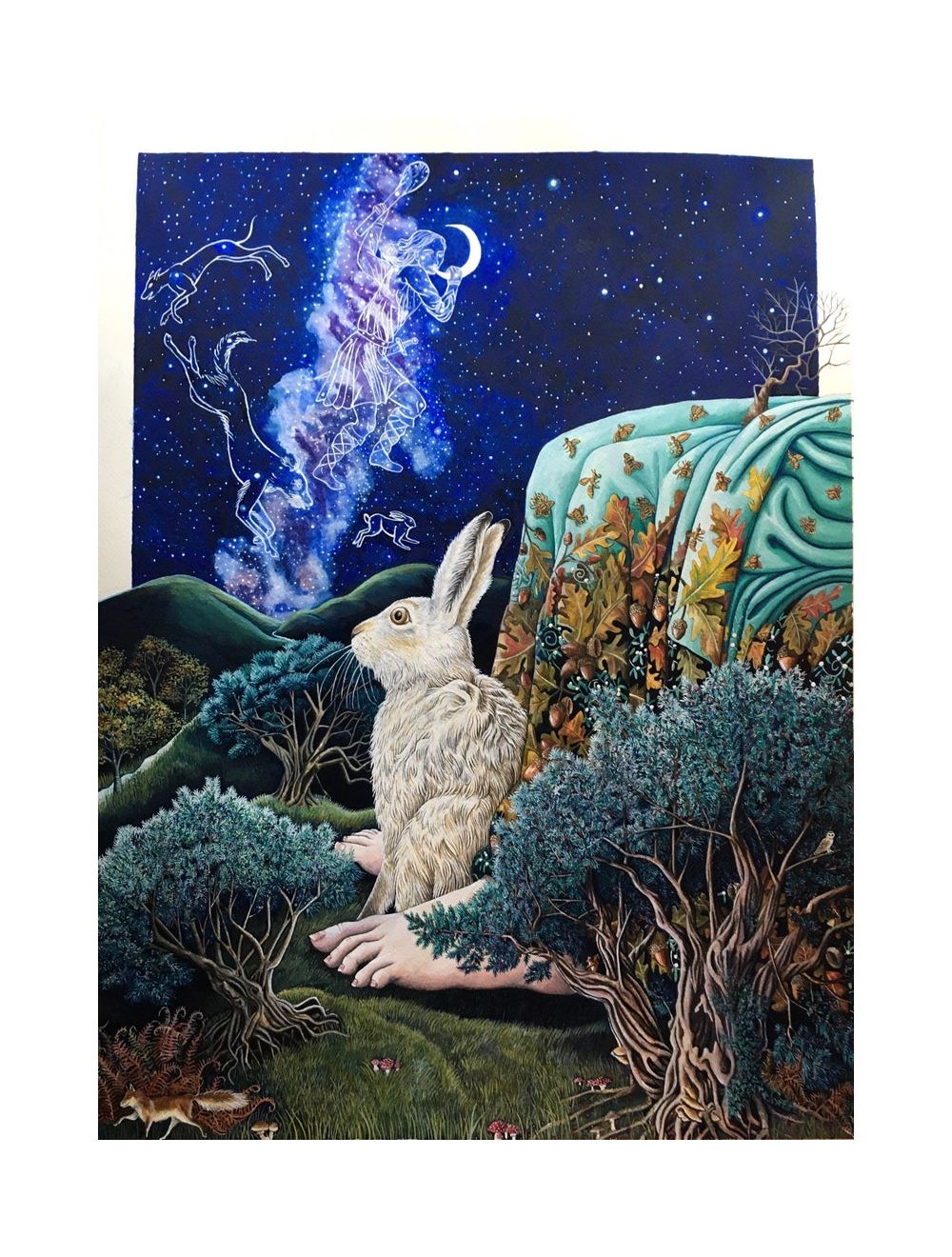Melangell’s Hare Greeting Card By Rebecca Stockburn
The Welsh antiquarian Thomas Pennant (1726–1798) related the story of Melangell. Her legend relates that she was the daughter of an Irish monarch, who had determined to marry her to a nobleman of his court. The princess had vowed celibacy. She fled from her father's dominions and took refuge in this place, where she lived fifteen years without seeing the face of a man. Brochwel Yscythrog, Prince of Powys, being one day a hare hunting, pursued his game till he came to a great thicket; when he was amazed to find a virgin of surpassing beauty, engaged in deep devotion, with the hare he had been pursuing under her robe, boldly facing the dogs, who retired to a distance howling, notwithstanding all the efforts of the sportsmen to make them seize their prey. Even when the huntsman blew his horn, it stuck to his lips. Brochwel heard her story, and gave to God and her a parcel of lands, to be a sanctuary to all that fled there. He desired her to found an abbey on the spot. She did so, and died abbess at a good old age. She was buried in the neighbouring church, called Pennant, and from, her distinguished by the addition of Melangell. Her hard bed is shown in the cleft of a neighbouring rock. Her tomb was in a little chapel, or oratory, adjoining to the church, and now used as a vestry room. This room is still called 'Cell-y-bedd' or the Cell of the Grave. Her reliques as well as her image have been long since removed; but I think the last is still to be seen in the churchyard. The legend is perpetuated by some rude wooden carving of the Saint, with numbers of hares scuttling to her for protection. She properly became their Patroness. They were called 'Oen Melangell' (St. Monacella's Lambs).<p>However, the origins of the story are likely much older, from the Bronze Age. The cremations at the site of Pennant Melangell date from 1500 BC. Also, Caroline Malim showed through astro-archaeology, that the constellations of Orion, Canis Minor and Major, the two dogs, as well as Lepus, the hare were all aligned with the valley from Samhain to Imbolc. These constellations are all characters in the legend. It is likely that the story is a syncretism of ancient lunar worship and funerary practices, and Christianity.
Regular Price
£3.00
Special Price
£2.40
Availability:
Out of stock
SKU
mhrs
C5 Blank greeting card on semi gloss card of this wonderful Welsh legend set in the Berwyn Mountains. The card comes with an envelope and within plastic alternative and biodegradable packaging.
| Is Featured | No |
|---|


